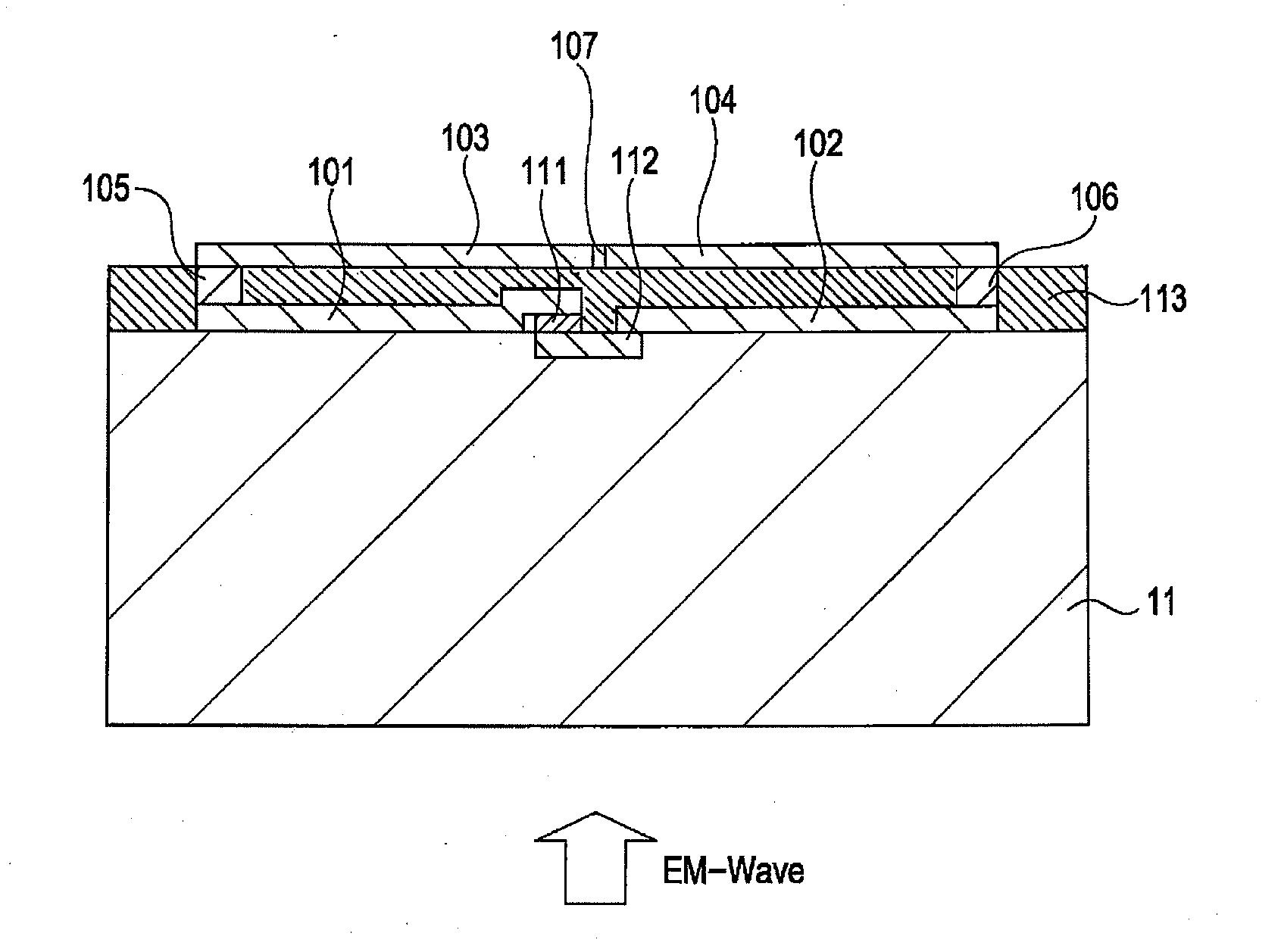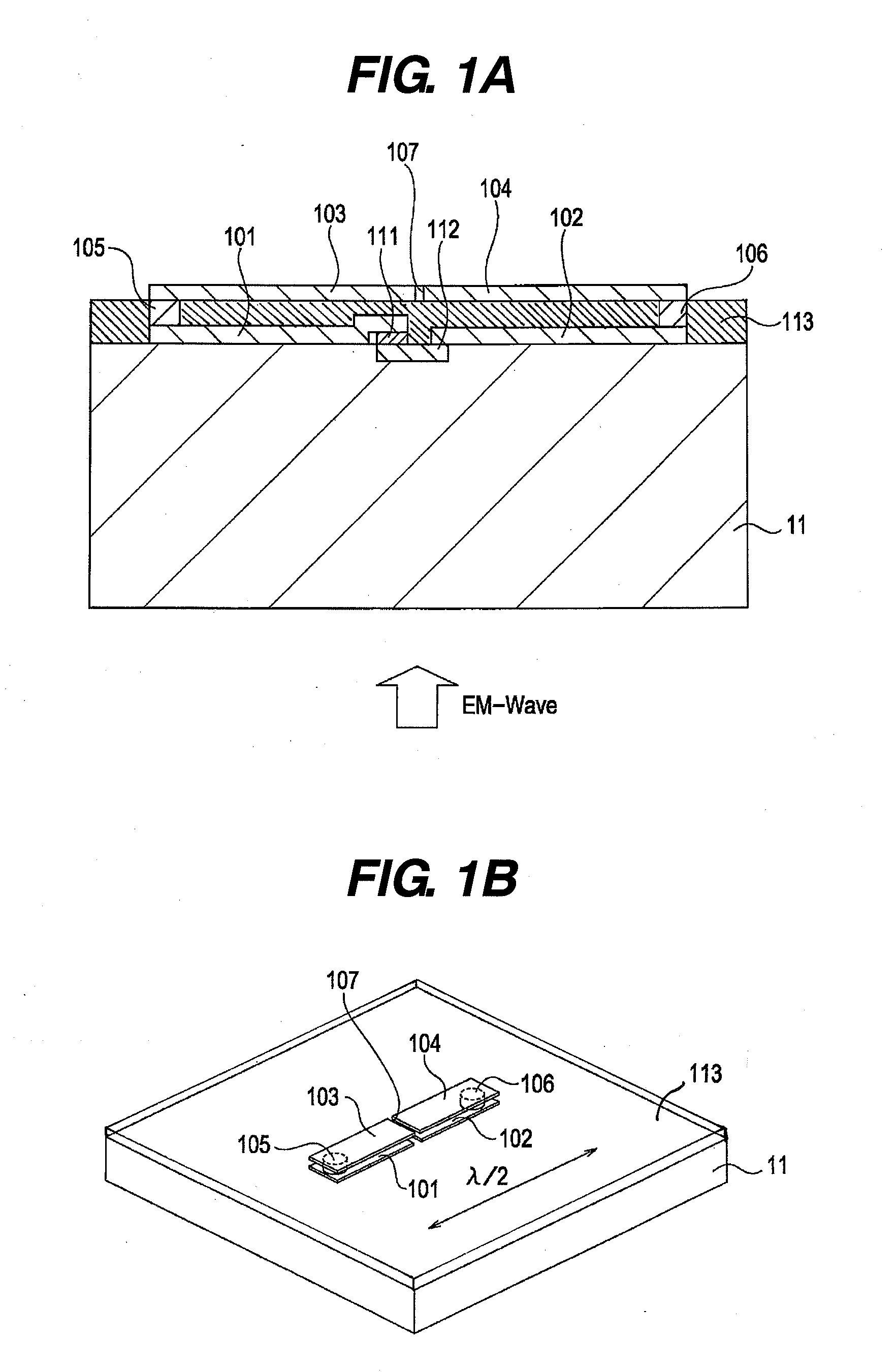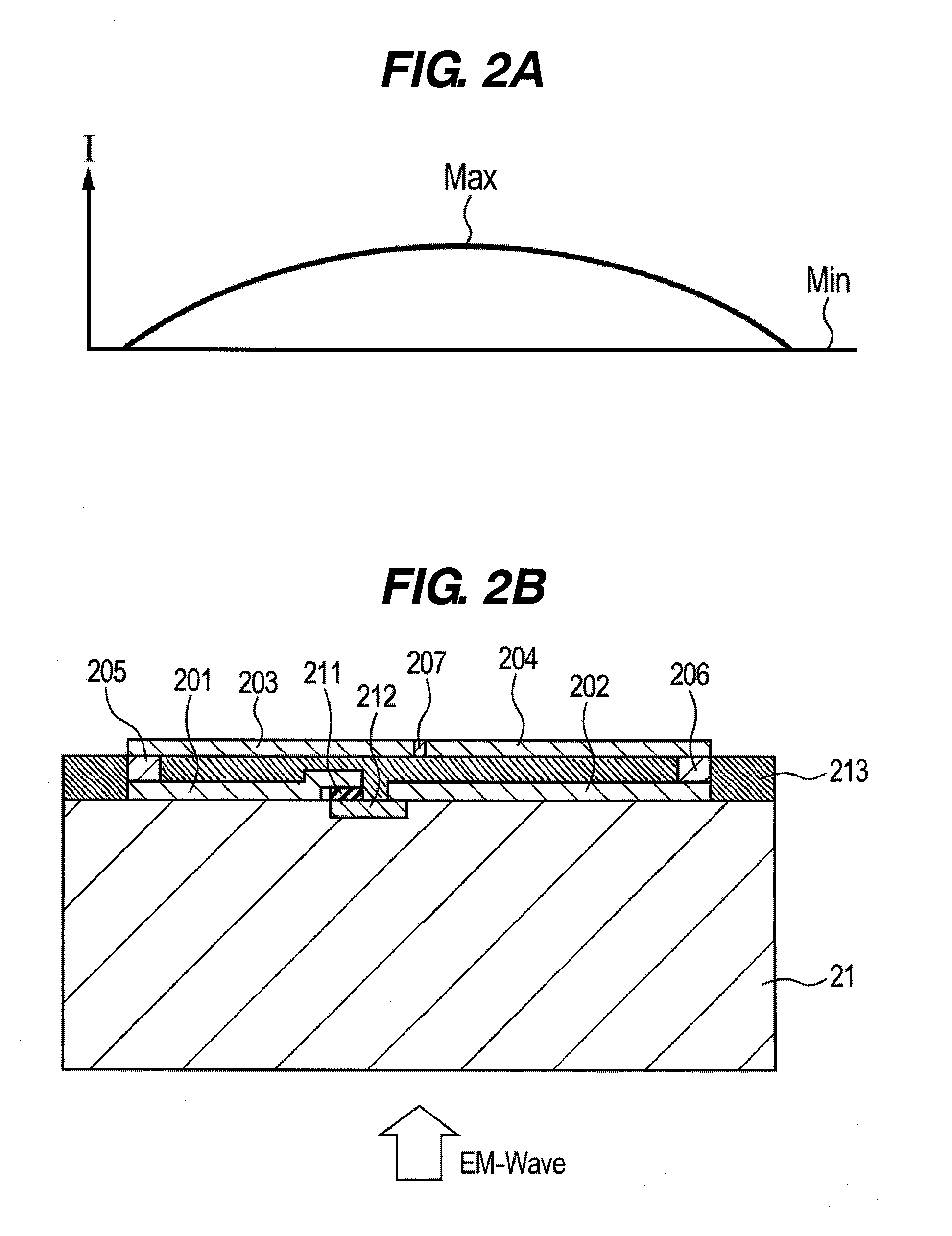Detection element for detecting an electromagnetic wave
- Summary
- Abstract
- Description
- Claims
- Application Information
AI Technical Summary
Benefits of technology
Problems solved by technology
Method used
Image
Examples
first embodiment
[0029]A detection element according to a first embodiment of the present invention is described with reference to FIGS. 1A and 1B. FIG. 1A is a cross-sectional view illustrating the detection element according to this embodiment, and FIG. 1B is a perspective view thereof.
[0030]The detection element according to this embodiment includes four conductive elements constituting an antenna, and two vias that are connecting members. Each of a divided first conductive element 101 and a divided second conductive element 102 is formed of a stripe metal film whose length is ¼ of a wavelength of the electromagnetic wave (λ / 4). The elements 101 and 102 constitute a λ / 2 dipole antenna, and a length direction thereof is a resonant direction of the electromagnetic wave. λ is a wavelength of the electromagnetic wave to be detected, which is not in a vacuum but is an effective wavelength multiplied by a wavelength compression ratio depending on a substrate 11. The elements 101 and 102 come into conta...
second embodiment
[0037]A detection element according to a second embodiment is described with reference to FIGS. 2A and 2B. In this embodiment, as illustrated in FIG. 2B, lengths of elements 201 and 202 and positions of semiconductors 211 and 212 are different from those in the first embodiment. The others are identical with those in the first embodiment. That is, elements 203 and 204, vias 205 and 206, a DC cut 207, and a dielectric material 213 are identical with those in the first embodiment. A sum of the lengths of the elements 201 and 202 is λ / 2, and the elements 201 and 202 are still λ / 2 dipole antenna. This embodiment is a modified example of the first embodiment in which positions of the schottky barrier diodes 201, 211, 212, and 202 are offset for increasing the input impedance of the antenna.
[0038]As shown in FIG. 2A, a current distribution I of the detected electromagnetic wave on the elements 201 and 202, and the elements 203 and 204 is minimum at positions corresponding to edges of the ...
third embodiment
[0039]A detection element according to a third embodiment is described with reference to FIG. 3. The detection element according to this embodiment includes four elements and two vias which constitute an antenna, and a metal film element 308 which is an additional fifth conductive element. In this embodiment, elements 301, 302, 303, and 304, vias 305 and 306, a DC cut 307, semiconductors 311 and 312, and a dielectric material 313 are identical with those in the first embodiment. The additional element 308 is located on a rear surface of a substrate 31 which is a surface opposite to the surface of the substrate on which the antenna is disposed, and a length thereof is set to be slightly longer than λ / 2. This embodiment shows an example in which the directivity of the antenna in the first embodiment is changed to a surface direction of the substrate 31 (upward in FIG. 3).
[0040]The element 308 slightly longer than λ / 2 derives from a technique called “reflector” that has been known by Y...
PUM
 Login to View More
Login to View More Abstract
Description
Claims
Application Information
 Login to View More
Login to View More - R&D
- Intellectual Property
- Life Sciences
- Materials
- Tech Scout
- Unparalleled Data Quality
- Higher Quality Content
- 60% Fewer Hallucinations
Browse by: Latest US Patents, China's latest patents, Technical Efficacy Thesaurus, Application Domain, Technology Topic, Popular Technical Reports.
© 2025 PatSnap. All rights reserved.Legal|Privacy policy|Modern Slavery Act Transparency Statement|Sitemap|About US| Contact US: help@patsnap.com



